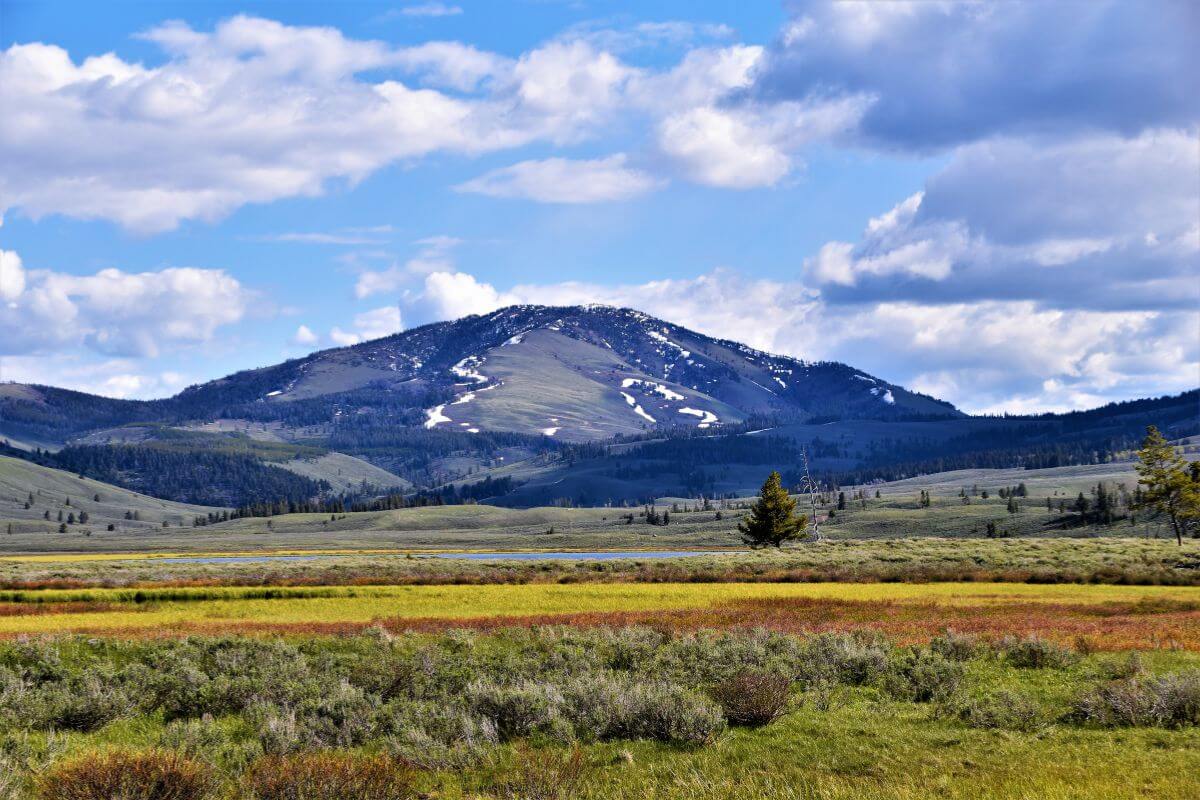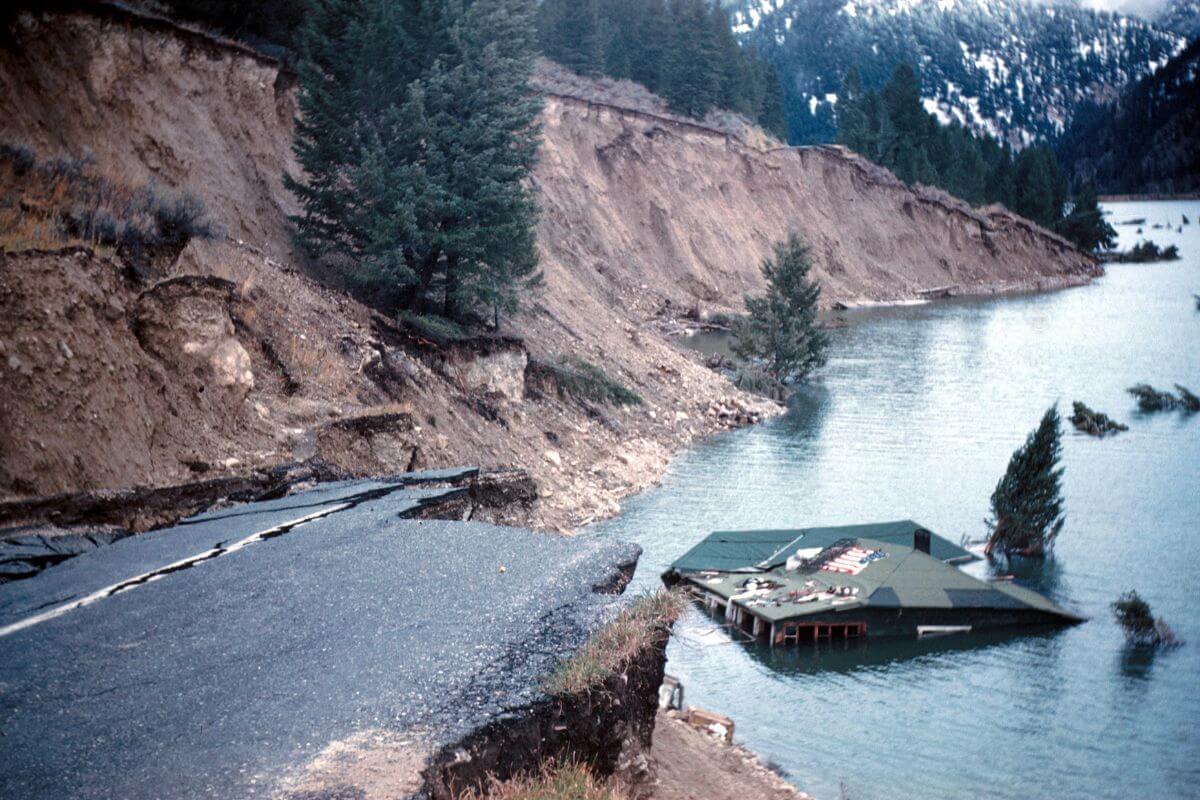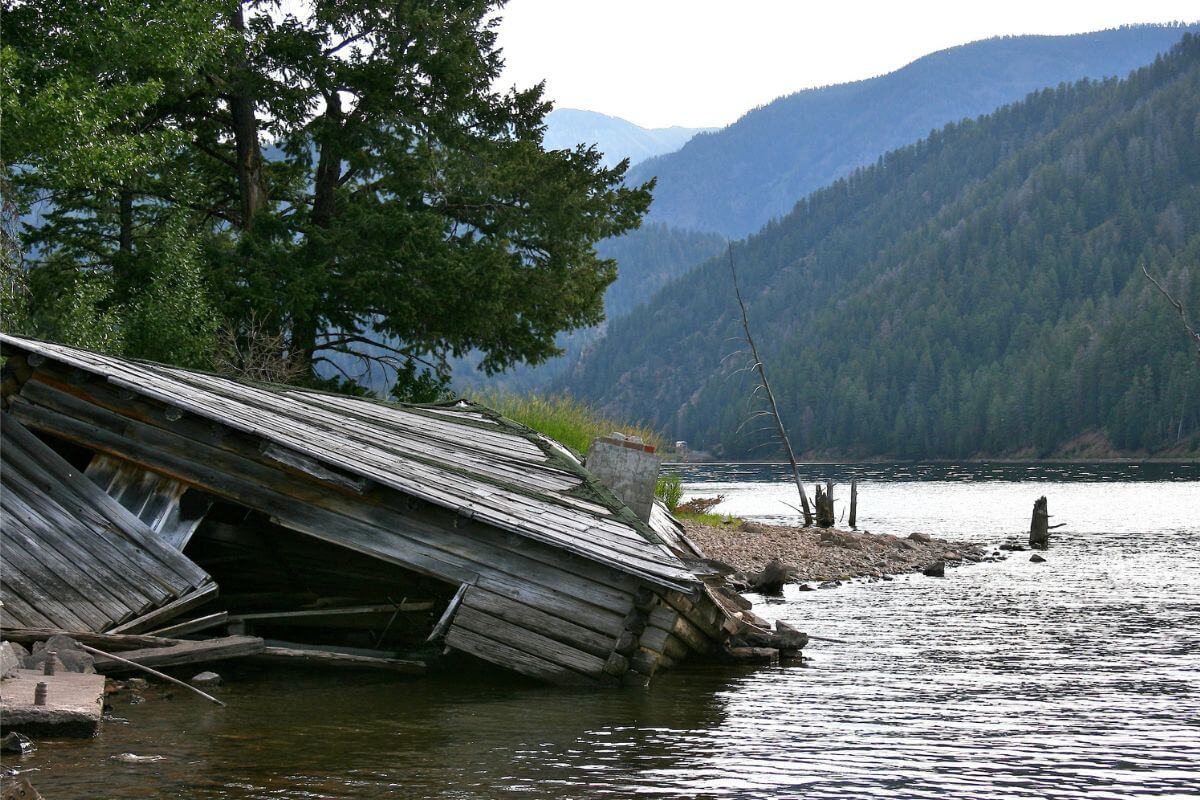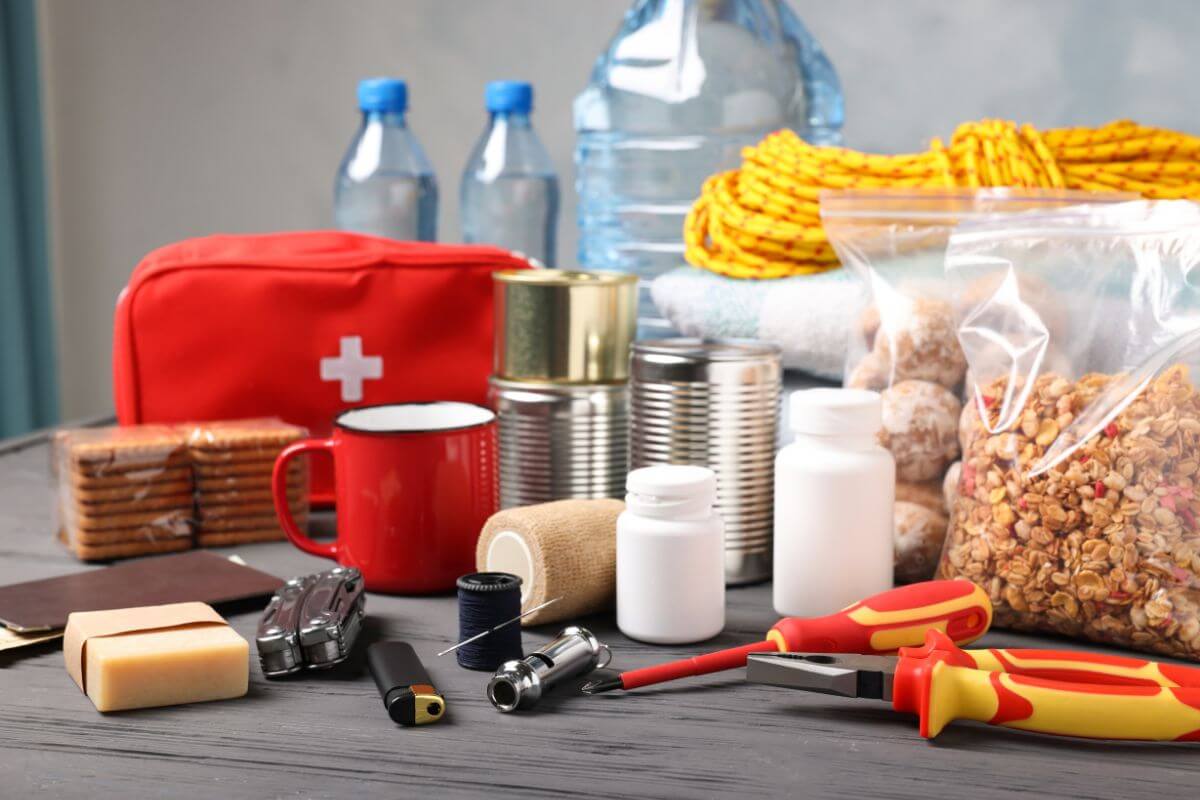Does Montana, with its tranquil landscapes and Big Sky vistas, ever experience the rumblings of an earthquake? It’s a valid question and one that might not be at the forefront of your mind when you think of this picturesque state. But the truth is, Montana has a seismic story to tell.
In this guide, you’ll learn about the notable earthquakes that have shaped the state’s landscape. We’ll also delve into the science behind Montana’s earthquakes and the regions most prone to seismic activity.
Whether you’re a resident or a visitor to the Treasure State, understanding earthquake safety is crucial. You’ll discover practical tips for earthquake preparedness, including what to do during and after an earthquake.
- Related article: Weather in Montana
So, let’s dive in and answer that intriguing question: “Does Montana get earthquakes?” You’ll come away not only with a deeper appreciation for this beautiful state but also with the knowledge to stay safe in the face of any seismic surprises.
7 Key Takeaways for Montana Earthquakes
- Montana, known for its serene landscapes, is not immune to earthquakes, making it one of the top 10 most seismically active states in the U.S.
- The 1959 Hebgen Lake earthquake was the most significant in Montana’s history, causing over 28 deaths and altering geysers in Yellowstone National Park.
- The Intermountain Seismic Belt, stretching from Flathead Lake to Yellowstone, is the epicenter of Montana’s earthquakes.
- Most Montana earthquakes are minor, but it’s crucial to be prepared, especially in areas like the Flathead Valley or Yellowstone.
- Montana’s Department of Emergency Services offers valuable resources on earthquake preparedness, including creating an emergency kit and communication plan.
- During an earthquake, remember to drop, cover, and hold on, and avoid hazards like glass and falling objects.
- After an earthquake, be prepared for aftershocks and avoid entering damaged buildings.
Does Montana Get Earthquakes?

Montana, with its tranquil landscapes and Big Sky vistas, may not be the first place you think of when it comes to earthquakes. But the Treasure State isn’t immune to earthquake activity. It’s experienced its fair share of tremors over the years.
So, if you’re planning a trip or even considering a move, it’s good to know what you’re stepping into. While you’re at it, you might also want to learn about Montana’s potential for hurricanes to ensure you have more safety bases covered.
Montana Earthquake History

Montana’s earthquake history is as storied as its Big Sky. The state’s first recorded earthquake shook Helena on May 22, 1869. But it was the October 1935 series of several hundred earthquake shocks, aptly dubbed “The Big Shake,” that rattled the city.
However, the most significant seismic event in Montana’s history is the 1959 Hebgen Lake quake. This 7.2 magnitude destructive earthquake, centered south of Ennis on the Madison River, caused over 28 deaths and altered the geysers of Yellowstone National Park, giving birth to more than 160 new ones.
It was the second-largest earthquake that was recorded in the continental United States. during the 20th century and still ranks among the largest in the nation’s history. But it doesn’t stop there. Eight years later, the U.S. Forest Service opened the Earthquake Lake Visitor Center, a testament to the lasting impact of this major earthquake event.
Today, you can dive into the history and science of the Hebgen Lake quake, learning about everything from the Hebgen Dam to the forces that shaped Earthquake Lake.
Montana Earthquake Risks

Montana, a state known for its rugged landscapes and serene vistas, also has its share of seismic activity.
If you think earthquakes are strictly a California thing, think again. Montana sits atop the Intermountain Seismic Belt (ISB), a 60-mile wide zone that stretches from the Flathead Lake region in the northwest to the Yellowstone Park region where Montana, Idaho, and Wyoming converge.
The ISB, running from Kalispell to Yellowstone, is the epicenter of Montana earthquakes. This entire region is considered prone to seismic activity, making Montana one of the top 10 most seismically active states in the U.S.
On any given day, you might be surprised to learn that Montana experiences up to 10 earthquakes. The frequency is due to the active faults within the Intermountain Seismic Belt.
Notable Historic Earthquakes in Montana:
- The 1959 Hebgen Lake Earthquake – Measuring 7.3 on the Richter scale, this quake caused significant damage and loss of life near Yellowstone National Park.
- The 1935 Helena Earthquake – A 6.2 magnitude quake that rocked the state capital, causing damage to buildings and infrastructure.
The good news is that most of these earthquakes are minor, with magnitudes below 3.0. However, it’s important to be prepared, especially if you’re in a more earthquake-prone area like the Flathead Valley or the Yellowstone region.
So, what does all this mean for you? If you’re a resident or a visitor to Montana, it’s wise to have a basic understanding of earthquake safety.
The Montana Department of Emergency Services offers valuable resources on earthquake preparedness, including tips on creating an emergency kit and developing a family communication plan.
While earthquakes may not be the first thing that comes to mind when you think of Montana, the state’s place on the Intermountain Seismic Belt makes it a part of the seismic narrative of the American West.
Montana Earthquake Safety Tips

When it comes to earthquakes, Montana may not be the first state that comes to mind, but it’s important to be prepared. During my time in Montana, I learned that the state experiences hundreds of earthquakes each year. While most are small and go unnoticed, it’s crucial to know what to do in the event of a larger tremor.
So, let’s dive into some practical earthquake preparedness tips specific to Montana.
During the Earthquake:
- Drop, Cover, and Hold On – This is the golden rule. Drop to your hands and knees, cover your head and neck with your arms, and hold on to sturdy furniture until the shaking stops.
- Stay Away From Hazards – Avoid glass, windows, outside doors, and walls. Anything that could fall, like lighting fixtures or furniture, is a no-go zone.
- If Inside, Stay Inside – Contrary to instinct, running outside during an earthquake is not advised. Stay put until the shaking subsides.
- If in a Vehicle, Pull Over – Find a clear area away from buildings, trees, overpasses, underpasses, and utility wires. Stay in the vehicle until the shaking stops.
- Avoid Elevators – Using elevators during an earthquake can be dangerous. Stick to the stairs if you need to move between floors.
- If Outside, Move to Open Areas – Stay away from buildings, streetlights, and utility wires. Open spaces are your safest bet.
After the Earthquake:
- Be Prepared for Aftershocks – These are smaller tremors that may follow the initial earthquake. They can be just as dangerous, so stay vigilant.
- Do Not Enter Damaged Buildings – If a structure looks compromised, it’s best to stay out. Wait for professionals to assess its safety.
- Evacuate if Necessary – If you’re in a damaged building or authorities instruct you to leave, do so calmly and quickly.
- Avoid Using Plumbing or Electricals – Earthquakes can damage these systems, leading to leaks or electrical hazards.
I can’t stress enough how important it is to take earthquake preparedness seriously, even in areas not commonly associated with seismic activity. By following these tips, you’ll be well-equipped to navigate an earthquake should one occur in Montana.
Montana Earthquakes Guide Final Thoughts

Montana’s earthquake history paints a compelling picture of its vulnerability to earthquakes, showcasing significant events like the Hebgen Lake earthquake in 1959 and the 1935 Helena quake. Despite its serene landscapes, the state rests atop the Intermountain Seismic Belt, experiencing frequent tremors.
Understanding earthquake safety becomes paramount for residents and visitors alike, emphasizing the “Drop, Cover, and Hold On” mantra and readiness for aftershocks. While Montana’s beauty remains unparalleled, being earthquake-ready ensures a safe embrace of its scenic wonders.
As we wrap up this Montana Earthquakes Guide, I want to emphasize that while the Treasure State isn’t exactly known for its seismic activity, it’s always good to be prepared. Remember, knowledge is power, and knowing what to do during a quake, no matter how rare, can make all the difference.
Earthquakes in Montana FAQs
1. What Causes Montana Earthquakes?
Montana’s seismic activity stems from its position within the Intermountain Seismic Belt, a zone prone to earthquakes due to active fault lines.
The state’s proximity to Yellowstone National Park, home to one of the world’s largest volcanic systems, contributes to the region’s geological instability, leading to tremors and seismic events.
2. How Frequent Are Earthquakes in Montana?
Montana encounters a notable frequency of seismic events, averaging between 7-10 earthquakes per day, as reported by the Montana Bureau of Mines and Geology.
This consistent seismic activity places Montana among the more seismically active regions in North America.
3. What Part of Montana Is Most Likely to Experience an Earthquake?
Southwestern Montana stands as the epicenter for seismic activity in the state, marked as the most seismically active region.
This area has witnessed a significant number of earthquakes, with magnitudes ranging between 4.0 to 5.6, totaling at least 50 occurrences since 1973.
Explore more about Montana by delving into the articles below:
- Tornado Risk in Montana
- How Humid Is Montana
- Wind Conditions in Montana
- Montana Areas With the Best Weather
- https://www.umt.edu/this-is-montana/columns/stories/earthquake-slide.php
- https://www.nps.gov/yell/learn/nature/earthquakes.htm
- https://mbmg.mtech.edu/MontanaGeology/geohazards/earthquakes/safety.asp#gsc.tab=0
- https://des.mt.gov/Preparedness/Earthquakes
- https://www.montana.edu/emergency/emergency_actions/earthquake.html
- https://www.flickr.com/photos/cagrimmett/1090157728
- https://www.flickr.com/photos/usgeologicalsurvey/24374620885

